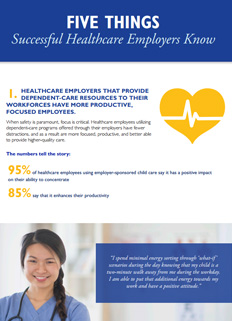Highlights
- Seventy-nine percent of employers now allow at least some employees to periodically change their arrival and departure time.
- The number of employees offering support for the care of older relatives has risen over the last 10 years.
- Thirty-one percent of employers provide health insurance for unmarried partners of employees today.
Remaining Flexible
Seventy-nine percent of employers now allow at least some employees to periodically change their arrival and departure time, up from 68 percent in 1998. More than half (53 percent) of organizations with more than 50 employees allow some workers to phase into retirement through reduced hours over a period of time before they retire completely. Thirty-eight percent allow some employees time off through paid or unpaid leaves of absences of six months or more. After their sabbatical, these companies allow their employees to return to a comparable job.Care for Loved Ones
The number of employers offering support for the care of older relatives has risen over the last 10 years. Currently, 39 percent of employers provide access to information about services for elderly family members, an increase of 16 percent over 1998. Unmarried partners of employees are receiving an increased amount of care as well, with 31 percent of employers providing health insurance for unmarried partners of employees today, up from 14 percent 10 years ago.Care for the Employee
Programs that support the well-being of the employee have also risen. The number of organizations offering employee assistance programs rose 9 percent in the last 10 years, up to 65 percent of employers. Today, 60 percent of employers provide wellness programs, an increase of 4 percent since 1998. In addition, new mothers are receiving increased consideration, 53 percent of employers provide private space for breastfeeding women; just 37 percent did so in 1998.Benefits On the Decline
In contrast, a number of benefits are losing speed, the study found. For example, employers have made a trade off in terms of what type of flexibility they're willing to offer. In 1998, 57 percent of employers allowed some employees to move from full-time to part-time work and back again while remaining in the same position or level; 47 percent allow this practice today. Fewer employers are offering full pay during maternity-related disability as compared to 10 years ago; the number of employers offering this benefit is down from 27 percent in 1998 to 16 percent today. Just 4 percent of employers pay all of the health care premiums for family members. Thirteen percent did so in 1998.To learn more about trends in employer benefits and policies, download the full report at www.FamiliesandWork.org.





